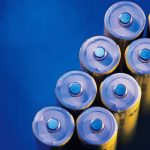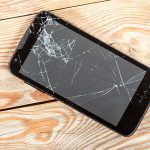
Latest lithium-ion battery uses water-salt solution, reducing risk of fire and explosion in household electronics
Tuesday, September 19, 2017 by Lance D Johnson
http://www.products.news/2017-09-19-latest-lithium-ion-battery-uses-water-salt-solution-reducing-risk-of-fire-and-explosion.html

Researchers have devised a powerful and safe military-grade battery that can also be used in the home. The new technology opens the door for the development of safe, powerful, durable, and efficient 4-volt batteries. The latest lithium-ion battery was developed by tech experts at the U.S. Army Research Laboratory and researchers from the University of Maryland. The technology combines the energy density of the SOA Li-ion batteries but does not pose any safety hazards. The unique water to salt solution ensures that the batteries remain safe, with no risk of fire or explosion. The batteries were also designed to reach four volts, making them suitable for household electronics such as laptops.
Go-to batteries such as the non-aqueous lithium-ion battery provide high energy, but they aren’t always safe, especially under severe mechanical abuses. Safer batteries, such as an aqueous nickel/metal hydride put out less energy. The researchers have found a way to get the best of both worlds.
Previous attempts to design powerful and safe batteries couldn’t find a way around the “cathodic challenge.” The aqueous electrolyte would readily degrade on one end because it is made from either graphite or lithium metal. This only allowed the battery to possess up to three volts at best. To get the batteries up to four volts, the University of Maryland researchers designed a new gel polymer electrolyte coating. Once the new coating is applied on the graphite or lithium anode, water molecules begin to move away from the electrode surface. After the first charge, this coating breaks down into a thin mixture, separating the solid anode from the liquid electrolyte. The mixture, called an interphase, protects the anode from reactions that weaken its power. The gel protection allows the battery to cycle more efficiently and achieve greater energy density.
“The key innovation here is making the right gel that can block water contact with the anode so that the water doesn’t decompose and can also form the right interphase to support high battery performance,” said co-senior author Chunsheng Wang, Professor of Chemical & Biomolecular Engineering at the University of Maryland’s A. James Clark School of Engineering.
The batteries are also durable in this aspect. If the interphase layer is damaged, the resulting reaction is slowed between the lithium or lithiated graphite anode. The gel invention slows the reactions, preventing smoking, fire, or explosion that is typically seen when direct contact is made with the electrolyte inside. (Related: Magnesium battery breakthrough means batteries won’t explode.)
“This is the first time that we are able to stabilize really reactive anodes like graphite and lithium in aqueous media,” says co-senior author Dr. Kang Xu. “This opens a broad window into many different topics in electrochemistry, including sodium-ion batteries, lithium-sulfur batteries, multiple ion chemistries involving zinc and magnesium, or even electroplating and electrochemical synthesis; we just have not fully explored them yet.”
The research team is currently looking for ways to reduce material expense while tweaking the inner mechanics of the battery to increase the number of full performance cycles. They believe they can increase the number of cycles five to ten fold, up to 500 cycles. They said the battery technology will be ready for commercialization in about five years.
For more scientific advances, research at Scientific.News.
Sources include:
Tagged Under: Tags: batteries, consumer electronics, discoveries, future tech, lithium ion, lithium-ion battery, scientific advancements, technology





